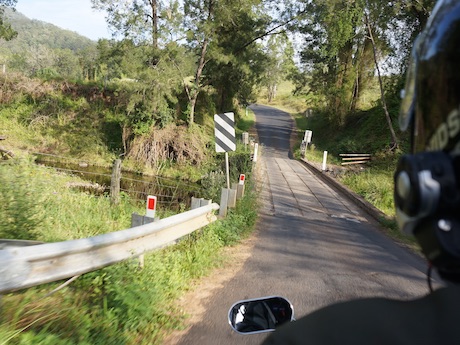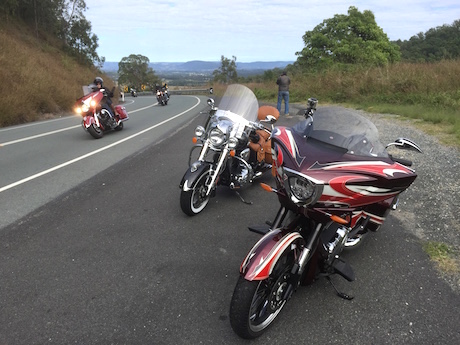Country roads are made for motorcycles with their interesting scenery and winding nature, but they are also full of hidden traps that can catch out a rider such as cattle grates, wooden bridges and heavily cambered roads.
Director of coaching at motoDNA Riding Academy has written the following tips on riding country roads.
1 Cattle grids
These can be treacherous on a motorcycle, especially when wet. Approach cattle grids with caution. Avoid crossing grids at the join if two grids have been used, the gap can be wide enough for a motorcycle tire. It’s not unheard of to see grids dislodged and popped out by heavy trucks. Get all your braking done nice and early and square the bike up well before you approach the grid. Ride across with a steady throttle so the bike is nicely balanced with little chance of wheel spin.
2 Cambers
Some country roads, especially if narrow, can be heavily cambered for drainage. As you corner the camber can change from negative to positive and back. The tire contact patch also changes on the bike, which can affect steering geometry and your feel through the handlebars. Anticipate less grip and reduced ground clearance on negative cambers and adjust your speed and lean angle to suit.
3 Road surface
A lot of country roads in Australia have poor surfaces, with potholes, gravel, and poor edging affecting your line through a corner. Always scan between the vanishing point and road surface so you can adjust your speed and road position as required.
4 Hill crests
The old adage look before you leap is something to live by and especially true when riding a motorcycle. What’s around the corner or over the hill? Wildlife, gravel, oil, potholes or farm machinery travelling at 10km/h?
Adventure riders know this as they often stand up, giving a greater view over the top of the hill. On a road bike lift your head as much as possible to peak over the hill; the earlier you can spot a hazard the better.
Your bike can go light, especially in the front. It’s better to slow down on the approach to the crest and accelerate once you can see the road is clear. However be aware that cattle grids can sometimes be on the crest of a hill.
5 Group riding
The biggest challenge with riding in a group is the range of abilities and not wanting to be left behind. If there is a problem and you need to stop, consider 100km/h is almost 30 metres in one second and your total stopping distance will also include perception and reaction times of typically 1-2 seconds. That’s 60 metres before you even apply the brakes. Smart riders stay in their comfort zone. Leave at decent gap to give yourself plenty of room and ride within your own limits.
6 Animals
In Australia many thousands of collisions occur each year between motor vehicles and animals, mostly on country roads. These can range from stray stock to wildlife, mainly Kangaroos and wallabies. Riders need to be especially vigilant at high-risk times of dawn, dusk, and at night.
7 Wooden bridges
Much the same as cattle girds, wooden bridges can be treacherous on a motorcycle, especially when wet. You should ride across single vehicle bridges in the vehicle track rather than the middle. Also look out for slippery metal bolt and rivet heads. Get all your braking done nice and early and square the bike up well before you approach the bridge. Ride across with a steady throttle so the bike is nicely balanced with little chance of wheel spin.
8 Cornering
Start your corner entry wide so you have good vision and a nice smooth line. Plan to exit the corner tight, which keeps you away from the head-on zone and gives you some room for error. Adjust your speed to suit how far you can see. If your vision to the vanishing point diminishes, reduce your speed.
9 Parking
It’s most likely you will want to stop along the way for a break or to take in the views. It sounds obvious, but park somewhere safe, if it’s a fun road there may be other like-minded spirited riders or drivers. Try to scan the area as you approach and plan where you will park. Watch out for the camber when you come to put your foot or bike stand down. If it’s up hill you may need to use your rear brake and park the bike in gear to prevent rolling back. Always try and park your bike pointing up the hill, unless it’s got a reverse gear!
10 Training
Over half of motorcycle deaths occur on corners, with 90% of fatalities happening when the bike crosses into the oncoming lane or runs off the road, according to the NSW RTA. Quality training, in a controlled and safe environment, will help a rider develop and understand their own and their machines capabilities, road-craft and attitude, improving your ability to survive on the road.






